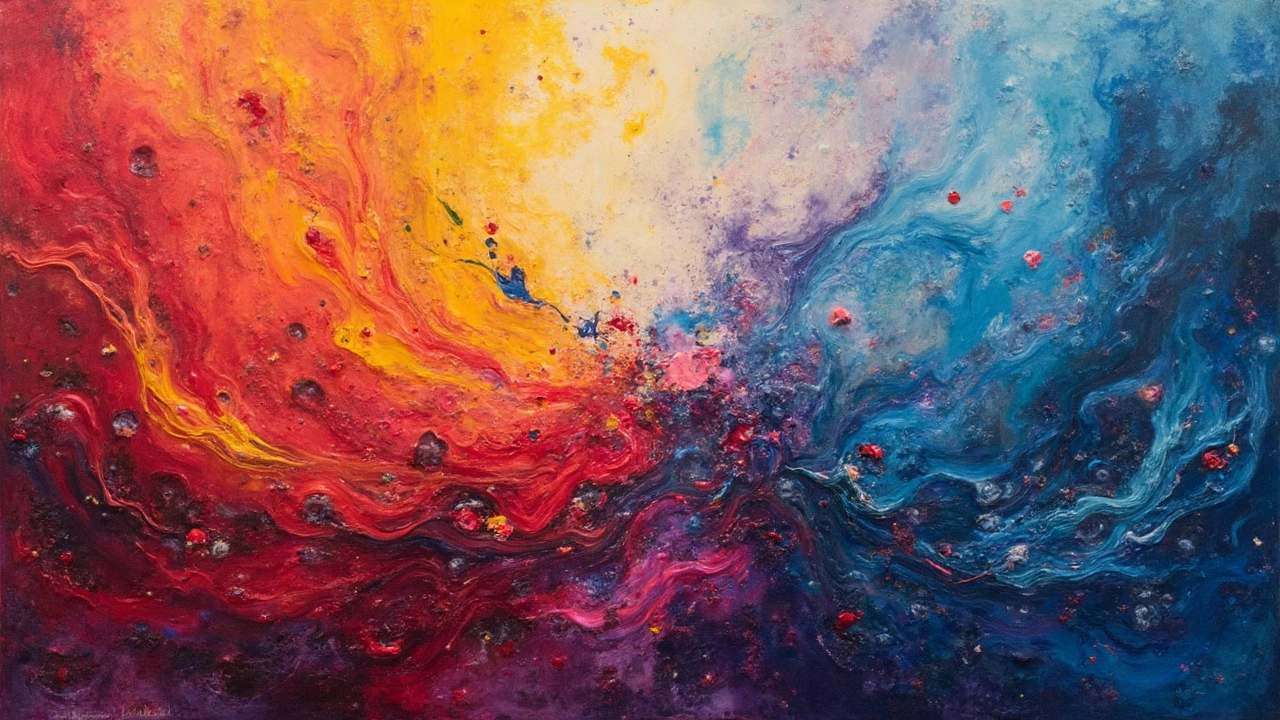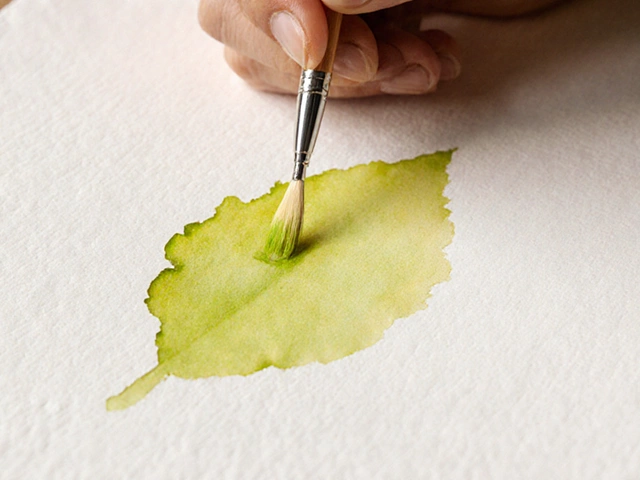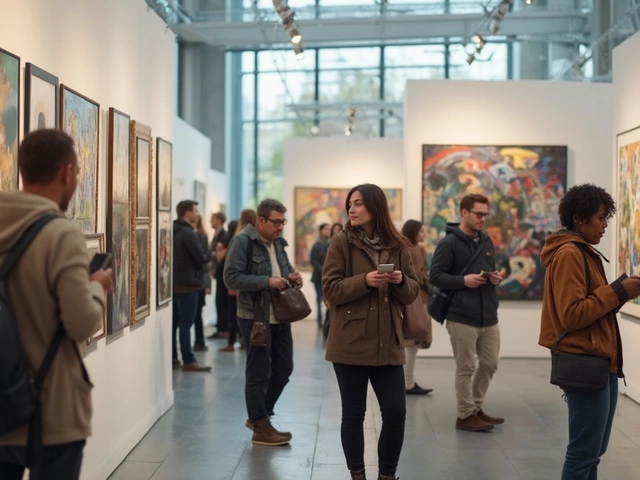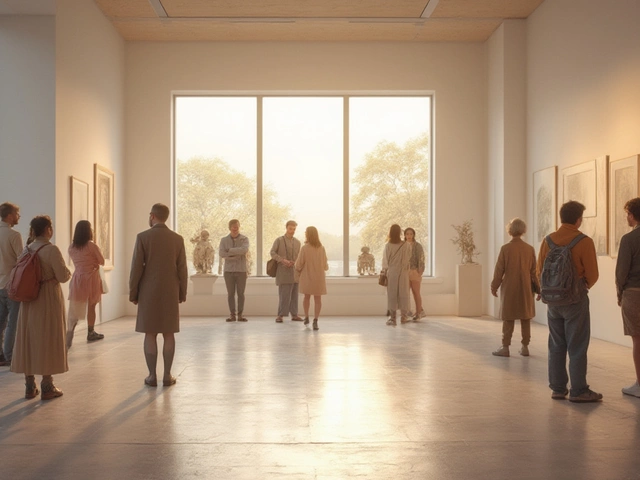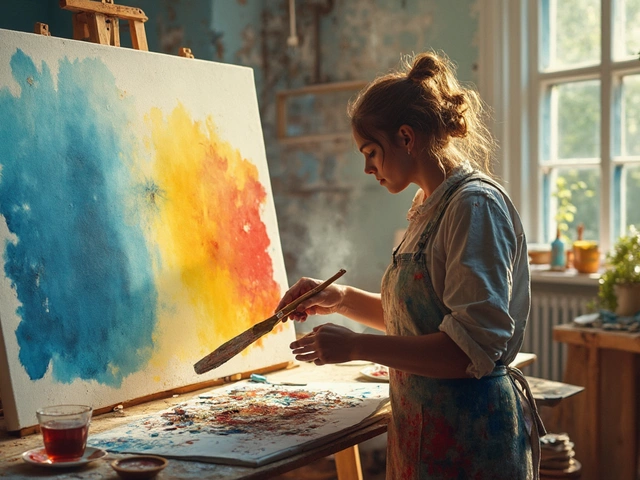Abstract art can really make you scratch your head, right? It's like this world where shapes, colors, and forms just blend together without any clear narrative. But that's the beauty of it—abstract art invites us to find meaning beyond the obvious. Forget about what you're supposed to see; focus on what you feel. It challenges that part of your brain that wants things to make sense and tells it, 'Hey, chill out for a minute.'
Despite being a bit mysterious, abstract art isn't just chaos thrown on a canvas. It's actually about emotions, ideas, and even how the world affects us all. Look back to the early 20th century when artists like Wassily Kandinsky first started exploding traditional forms. They ditched the real-world depictions, opting for something more expressive. Now, whether it’s a swirl of red on a huge canvas or some minimalist lines, there’s probably a story or a feeling just waiting to be discovered—even if it's not immediately obvious.
- What is Abstract Art?
- The Evolution of Abstract Art
- Famous Abstract Artists
- Why Do People Like Abstract Art?
- How to Interpret Abstract Art
- The Role of Abstract Art Today
What is Abstract Art?
So, what exactly is abstract art? Let's break it down in simple terms. Unlike traditional art that tries to mimic the real world, abstract art is more about playing with pure form and color. It's like the artist is setting emotions and ideas free, without tying them down to obvious objects we see in everyday life. Think of it as the jazz of the art world—it riffs, it explores. But what's crucial here is that it doesn't always have to 'look like something' to be something.
Abstract art burst onto the scene in the early 20th century, with pioneers like Wassily Kandinsky and Piet Mondrian leading the way. They wanted to break away from the old-school thinking that art had to be a window to reality. Kandinsky put it pretty well, "
Color is a power which directly influences the soul." That's the magic of abstract art—it hits you with feelings and thoughts that aren't just about the picture itself.
Why do artists ditch the obvious for something so out there? Well, there's freedom in not being bound to a particular form. They can explore ideas in their rawest form, challenging the viewer to engage with the artwork on a personal level. And as viewers, we're invited to interpret, question, and even project our own experiences onto the artwork. It's more dialogue than just observation.
But don't get it twisted; abstract art isn't just random splatters. A lot of thought goes into the arrangement, colors, and forms. It asks the viewer to stop trying to find a literal meaning and just feel the essence of the composition. This makes it very personal and subjective—each person might see and feel something completely different.
So, the next time you stand in front of an abstract piece, try not to think too hard about 'what it is.' Instead, ask yourself how it makes you feel. That's where the real meaning hides.
The Evolution of Abstract Art
Diving into the wild world of abstract art, you'll find that it didn't just pop up out of nowhere. It was a game-changer that emerged in the early 20th century, pulling away from traditional art that depicted the physical world. It grew from a need to express what can't be seen: emotions, concepts, and the human experience in a way that realistic painting simply couldn't capture.
Think back to 1910 when Wassily Kandinsky, often hailed as one of the pioneers, created paintings that were more about conveying feelings than depicting real-life things. This was groundbreaking. Instead of focusing on an apple or a sunset, Kandinsky's work was about the sounds and rhythms of life. His work sparked a whole movement where artists across Europe, like Piet Mondrian and Kazimir Malevich, began to experiment.
In the 1940s and 50s, abstract art crossed the ocean to the United States during a time when people really needed new ways to think about the world. This led to the rise of Abstract Expressionism, with names like Jackson Pollock and Mark Rothko making waves. They treated art as an act, a performance—where the process of painting was just as important as the finished piece. Pollock’s drips and splashes, Rothko’s expansive color fields—they weren’t just breaking rules. They were reinventing what art could be.
Fast forward a bit, and abstract art continues to morph and adapt, reflecting our rapidly changing world. It remains a major influence in modern art scenes, continuously inspiring new generations of artists. Its evolution tells an intriguing story of how art pushes boundaries and explores new territories, ensuring that it's anything but predictable. And isn't that part of what makes it all so exciting?
Famous Abstract Artists
When you talk about abstract art, you can't skip over Wassily Kandinsky. He's often called the father of abstract painting. Kandinsky believed that colors and forms could express feelings and emotions, much like music does. His works, like 'Composition VIII,' are all about this explosion of shapes and hues that evoke different moods in everyone who looks at them.
Then you've got Piet Mondrian, who took things in a different direction. His artwork is known for its clean lines and grids, using primary colors and simple geometrical shapes. Mondrian believed abstract painting was a way to uncover a deeper, universal beauty. His style might seem simple, but it was revolutionary at his time.
We can't forget Jackson Pollock, the man who brought chaos to the canvas with his action paintings. His method, where he literally threw or dripped paint onto the canvas, was all about spontaneity. Works like 'No. 5, 1948' totally changed how people thought a painting was 'supposed to' be created.
And of course, there’s Georgia O'Keeffe, who found abstraction through nature. Though often more representational, her close-up flowers lean into abstraction, focusing on form and color. Her unique way of seeing the natural world made her a pivotal figure in bringing a softer, yet equally profound, abstract expression to art.
These artists didn’t just paint pictures; they crafted entire experiences that pushed the boundaries of what art could be. Each brought a unique twist, adding to the diverse tapestry that is abstract art today.
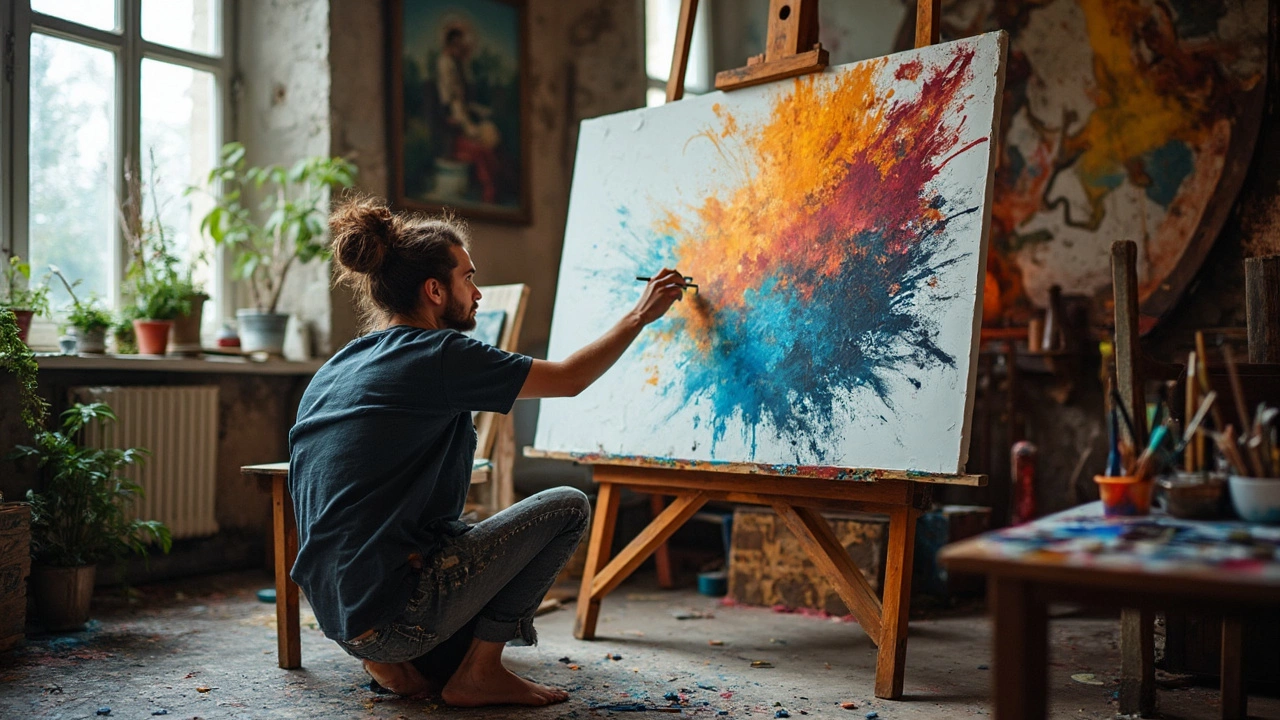
Why Do People Like Abstract Art?
Here's the deal with abstract art: it opens up a whole universe of possibilities. For some folks, the magic lies in its ability to express raw emotions without the safety net of familiar forms. It's like listening to music without lyrics—pure feeling and imagination. So instead of seeing what the artist drew, you see what you want to feel.
A lot of people dig abstract art because it gives them a chance to connect with something personal. It's a unique interaction; each person might walk away with a totally different impression from the same piece. Somebody might see a stormy sea in swirling blues, while somebody else feels serenity. That's why it's so popular—it speaks to individuals in their own language.
"Abstraction allows man to see with his mind what he cannot see physically with his eyes... abstract art enables the artist to perceive beyond the tangible, to extract the infinite out of the finite. It is the emancipation of the mind. It is an explosion into unknown areas." – Arshile Gorky
Another reason is the sheer freedom abstract art gives to artists. They're not boxed in by reality's rules. This creativity often leads to groundbreaking work that pushes boundaries and makes us rethink what art can be. Plus, there's this element of excitement and mystery—knowing that it's your mind that fills in the blanks.
Believe it or not, museums and galleries have noticed abstract art getting the crowds curious. Check this out: a modern art exhibit featuring abstract pieces in a major city reported a 15% increase in visitor numbers compared to typical representational exhibitions. Whether it's curiosity or admiration, people just can't resist diving into the endless possibilities that abstract art offers.
How to Interpret Abstract Art
Interpreting abstract art is like decoding a puzzle without a picture on the box. It's less about 'getting it right' and more about personal experience. Here's a simple approach to help you connect with these enigmatic creations.
First up, drop any expectations you might have. Some artworks won't 'mean' something in the traditional sense. Instead, look at them as expressions of emotions or moods. Take a moment to observe what feelings surface as you engage with the work.
When you're ready to dig a bit deeper, consider the context. Check out the time and place the piece was created. For instance, during the early 20th century, a lot of abstract art was about breaking free from the more rigid, representational forms that dominated before. This could link to societal changes or the artist's own personal evolution.
Another tip is to focus on the colors, shapes, and lines. These elements can be really telling. Does a bright red strike you as passionate or maybe even aggressive? Are the lines smooth and calming, or jagged and unsettling? It's all about what resonates with you as an individual.
It might help to know what the artist intended. Sometimes, galleries provide those little blurbs or audio guides to give background info. But even if you don't have those, trust your instincts. Your personal interpretation is totally valid.
Remember, there’s no 'correct' way to appreciate modern art. Every viewer will come away with something different, and that's the magic of it. You bring your own story to the art, and the art offers its story back to you. It's a dance between you and the canvas, and that's where the intriguing connection forms.
The Role of Abstract Art Today
Today, abstract art is more than just a splash of colors; it's a powerful tool for expression and innovation. In our fast-paced modern world, abstract art echoes the complexity and chaos we experience daily. It gives artists the freedom to break away from traditional subjects and create something that's more about the mood or idea they're tackling. This freedom is why it's still such a popular choice among modern artists.
Abstract art also plays a crucial part in mental health therapy. Many art therapists use it to help people express complex emotions without needing to find the perfect words. It can be a safe space to explore feelings and thoughts that are hard to articulate. Plus, engaging with abstract art—whether you're creating or just viewing—has been shown to reduce stress and increase relaxation.
In the digital age, abstract art has also found a new home online. Artists are using technology to create digital abstracts, reaching wider audiences through social media and virtual galleries. This shift has made abstract art more accessible, allowing people to engage with it from anywhere in the world.
Finally, let's not forget how abstract art influences other fields like fashion, interior design, and even architecture. It inspires everything from the bold prints on a designer dress to the innovative layouts of modern buildings. Abstract art isn't just on the walls of galleries; it's woven into the fabric of everyday life.
